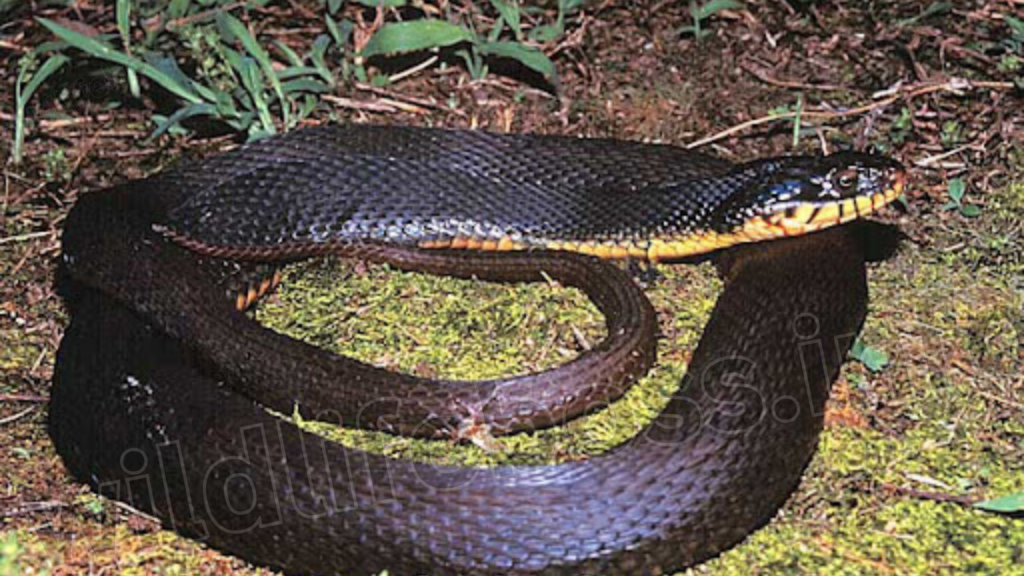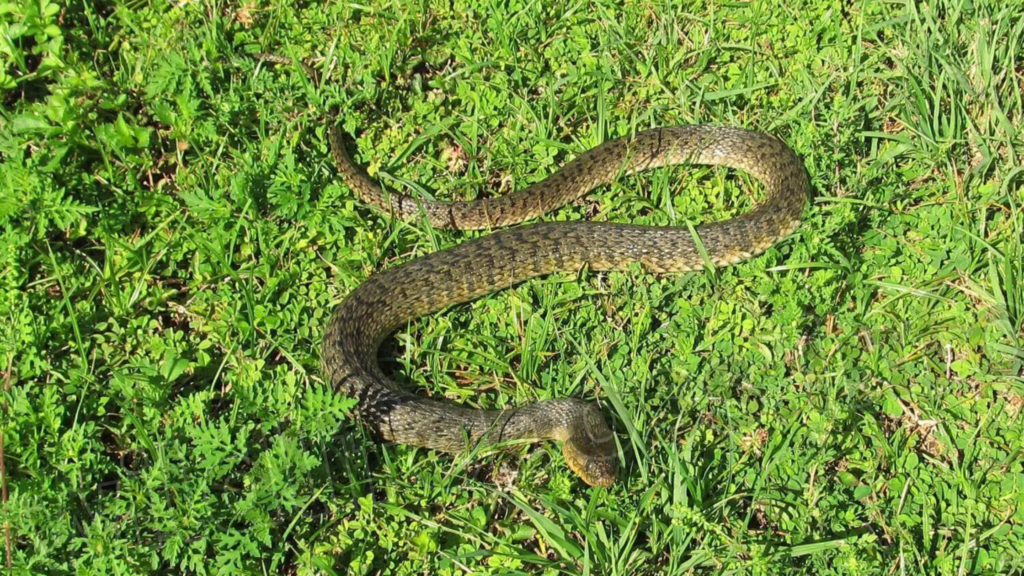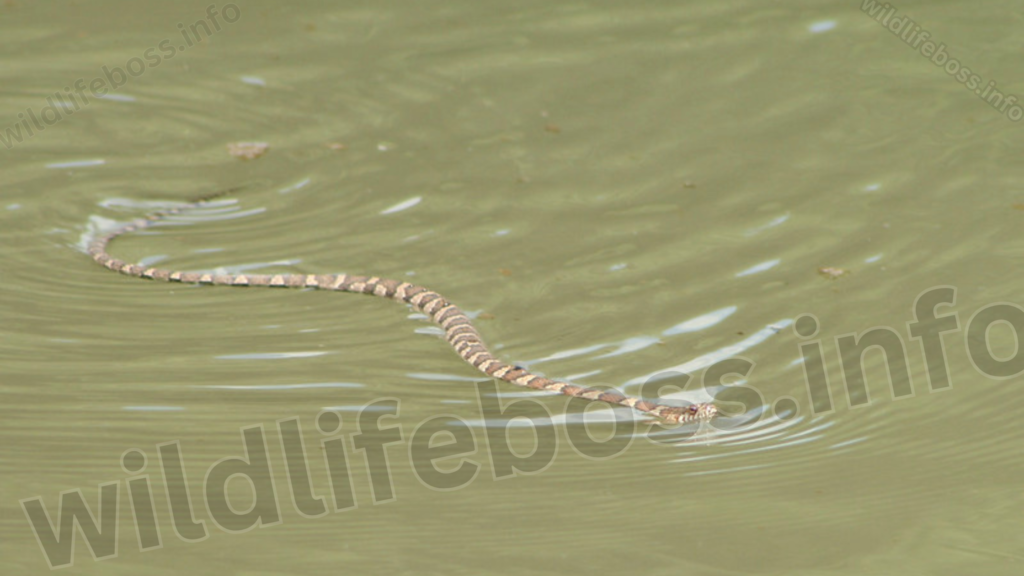The water snake is aquatic in its living style and is mostly an innocent, nonpoisonous snake. All of them are native to North America and spend throughout the whole their lives in proximity to water.
We will examine ten different kinds of water snakes in today’s article.
-
- Salt Marsh Snakes
- Green Water Snakes
- Plainbelly Water Snakes
- Banded Water Snakes
- Florida Green Water Snakes
- Brazos Water Snakes
- Concho Water Snakes
- Diamondback Water Snakes
- Common Water Snakes
- Brown Water Snakes
1. Salt Marsh Snakes

Scientific name: Nerodia clarkii
These snakes, as their name implies, are often found in salt marshes in the Southeast United States, while a unique population has recently been observed in Cuba.
Random facts, they are not poisonous like all other water snakes and have no venom. Despite reaching a size of 30 inches, they are mostly found in water or nearby areas during most of the daylight hours.
Since the pigmentation of the skin varies with different populations, two snakes of the same species can be very different in appearance.
Small fishes and crabs are the major prey of these arboreal water snake species that are mainly nocturnal foraging in Louisiana.
Sea also: 6 Best Types of Garter Snakes in Kansas (With Pictures)
2. Green Water Snakes
Scientific name: Nerodia cyclopion
Although their range extends north to Illinois, these snakes are also found in the Southeast region of the country.
They typically reside in lakes, marshes, and bayous there, where they eat fish and little frogs.
Green water snakes are distinctly heavy-bodied, dark green or even brown, and can reach a maximum length of 55 inches.
Due to their widespread presence in Mississippi, these water snake species are frequently referred to as “Mississippi green water snakes.”
3. Plainbelly Water Snake

Scientific name: Nerodia erythrogaster
Among all water snakes, the plainbelly may be the most straightforward to identify. The body can be brown, black, or olive green, while the belly is usually yellow or a pale red.
Additionally, it has no markings on its abdomen, whereas other water snakes typically have patterns.
They are distributed throughout the Virginia, Texas, and Florida triangle, with the exception of the Appalachian Mountains.
This is the least aquatic water snake of all, however it is frequently found near water like other water snakes.
If the humidity in Arkansas is high enough, these kinds of water snakes will frequently avoid water.
4. Banded Water Snakes
Scientific name: Nerodia fasciata
Banded water snakes also go by the name “southern water snake” can be seen as far north as Indiana; There are indicates of the establishment of invasive populations in California and Arizona and even Los Angeles.
In Indiana, these kinds of water snakes are often brown, black, or dark gray with light bands running across their bodies.
Because the banded water snake’s head is flat and triangular, it is frequently confused for the cottonmouth, which causes people to kill them out of fear.
However, neither humans nor pets should be afraid of these snakes because they are not poisonous.
5. Florida Green Water Snakes

Scientific name: Nerodia floridana
While these snakes maybe present in some regions within Georgia or South Carolina, they are more predominantly found in pen-insular Florida. They mainly inhabit areas in which the waters flow gently in that region.
They typically have a few black dots on the back and are either brown or green.
The ecological chain depends heavily on Florida water snakes, which are prey to alligators, kingsnakes, herons, hawks, and river otters.
But they eat salamanders, tadpoles, fish, and little frogs.
These Florida water snake species do not suffocate their victims. In fact for the most part, water snakes do not construe then but just grab it using their strong jaws and swallow it.
6. Brazos Water Snakes
Scientific name: Nerodia harteri
This one is the most scarce or rare water snake. As their name suggests they can only be sourced around Central Texas region near the Brazos River.
They are classified as near-threatened because their habitat is very rare.
These water snakes are usually green or brown colored and the maximum length attained by the species in Texas is 32 inches.
7. Concho Water Snakes

Scientific name: Nerodia paucimaculata
The habitat of another endemic species in Texas known as Concho water snakes is larger than that of Brazos water snakes. They can be found in four counties in western Texas in the Colorado and Concho river systems.
Although they are more red in color, they resemble Brazos water snakes in appearance.
They don’t have any markings on their abdomen like Brazos water snakes do.
8. Diamondback Water Snakes
Scientific name: Nerodia rhombifer
Although it is also present in northern Mexico, this species of water snake is the southernmost. They are primarily found in the vicinity of the Mississippi River system in the United States.
They are frequently mistaken for the poisonous rattlesnake due to their distinctive diamondback appearance. They are not poisonous, though, and will flee if you approach them.
It’s interesting to note that Missouri water snakes of this kind bite extremely painfully. They have extremely strong teeth to hold their prey steady because they are unable to constrict it.
9. Common Water Snakes

Scientific name: Nerodia sipedon
This species of the water snake is probably the most commonly found in the United States given the name of this animal. They can become brown to olive green in hue and reach a length of almost 4 feet. As they age, their color typically gets darker.
Similar to cottonmouth, this kind of water snake frequently causes people to kill it out of fear. On the other hand, cottonmouths are stockier and shorter.
It is not recommended to disturb these water snakes since they exude scent to ward off predators and bite very viciously when defending themselves.
10. Brown Water Snakes
Scientific name: Nerodia taxispilota
These water snakes, which are typically found in wetlands and streams, are found along the USA’s southeast coast. With the longest snake ever measured being 69 inches, they frequently reach lengths over 60 inches.
With even deeper spots running down their back, they have a very black complexion.
Because they are typically neither that dark nor that unicolor, water snakes are therefore easy to identify.
Conclusion:
Water snakes are mostly aquatic creatures that have evolved to live close to water throughout their lives. These snakes simply capture and consume their prey to kill them; they are neither venomous nor constrictors. However, they should not be disturbed because their bite still hurts a lot.
To aid in their hunting, they have developed camouflage adaptations. In certain situations, such as with the diamondback water snake, they are mistaken for poisonous species and killed.

Pingback: 16 Amazing Types Of Vipers(Explained) - Wildlifeboss.info